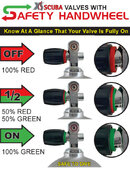cozumelkeith
Registered
Hey All,
Putting together my first doubles rig. Just need the bands and manifold at this point. Wondering if anyone could speak to the differences between some of the more popular manifolds (I've been looking at Thermo, XS, Dive Rite), and whether in practice these are of any real significance/
Thanks so much for your help.
-Keith
Putting together my first doubles rig. Just need the bands and manifold at this point. Wondering if anyone could speak to the differences between some of the more popular manifolds (I've been looking at Thermo, XS, Dive Rite), and whether in practice these are of any real significance/
Thanks so much for your help.
-Keith





